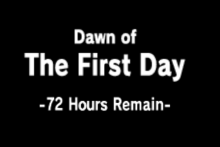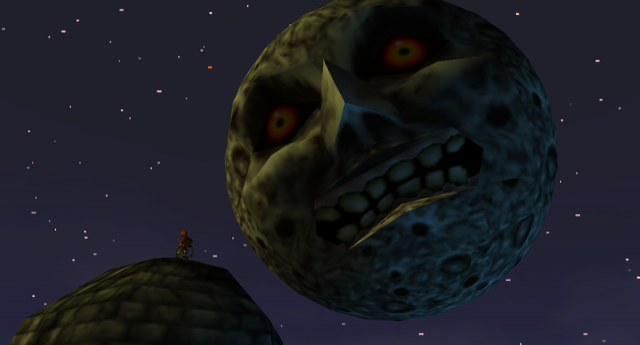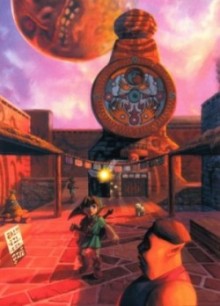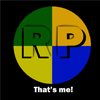That Ominous Feeling
Posted on January 04 2013 by Mases Hagopian

 Majora’s Mask is a unique experience within the Zelda series. While it may be considered dark because it strays from the traditional Zelda atmosphere, Twilight Princess and A Link to the Past are also dark titles when compared to other Zelda games, yet they don’t feel different the way Majora’s Mask does.
Majora’s Mask is a unique experience within the Zelda series. While it may be considered dark because it strays from the traditional Zelda atmosphere, Twilight Princess and A Link to the Past are also dark titles when compared to other Zelda games, yet they don’t feel different the way Majora’s Mask does.
The game begins with Link being attacked by the Skull Kid and having his precious Ocarina stolen from him. With no other choice, Link teams up with Tatl and chases after the Skull Kid. Finally, he makes it to Clock Town and begins his search for the thief. But something is off. That something is the ominous feeling of Majora’s Mask: The sensation that some unknown danger is approaching. This strange, eerie aura is everywhere. Even in the seemingly happy areas, the game presents an ominous atmosphere. The player is constantly given clues that something bigger is going on and that eventually, Link will have to deal with it.
The Moon
The most obvious sign that something is wrong is the moon. It presents an atmospheric menace, but the player can deduce that it will become real trouble based on comments from characters in the game or simply by noticing the moon drawing closer. In order to obtain the moon’s tear and move past the opening stages of the game, at one point the player is required to view the Skull Kid through a telescope. On the first two days, the Skull Kid merely mocks you and then the tear falls from the moon. On the third day, he looks possessed and stares up at the moon, giving the player more indication that the moon is a problem. At that point, there should no longer be any doubt whatsoever in the player’s mind. Regardless, Tael makes the stakes completely clear; the moon is indeed Link’s problem.
Even after time rewinds, the moon is a constant reminder that everything is always in trouble. When Link completes a task, the moon is still staring at the ground, reminding him that his job isn’t done. It is the main source of the game’s tense atmosphere and can be seen from practically everywhere in Termina. Therefore, no one can go through the game without remembering that eventually they’re going to have to deal with the upcoming danger.
Time Travel
The time traveling mechanism in Majora’s Mask is a crucial component to the atmosphere.
Thanks to the time traveling component, the player is given unlimited time to beat the game. Yes, in pretty much every game in existence there is an unlimited amount of time to finish, but how many take the time to tell you that? Sometimes games create a sense of urgency, but rarely does a game tell you to take your time. What separates Majora’s Mask from the rest is that time travel is a key part of the game; it puts the concept of “unlimited time to beat the game” on the forefront of the player’s mind. Even though practically everything is reset when you play the Song of Time, you can always collect items and complete dungeons and sidequests again. But, as with any lengthy adventure game, eventually you’re going to have to deal with the central conflict in order to complete the game. Dealing with the threat presented by the Skull Kid and the moon is necessary, but the time travel mechanic prolongs this conflict.
You’re given the resources to deal with the central problem, but are constantly reminded of it even as you spend time avoiding it, solidifying the ominous feeling that is central to the game’s atmosphere.
The people of Termina are unique in the Zelda series in that their lives go on with or without you. Non-player characters usually wait for you to do your part when you interact with them in other Zelda games. In Majora’s Mask, they won’t wait. Either you do what you’re supposed to, or they will go down the path that they would have had you never existed. This makes every major side character in Majora’s Mask more important to the player, and it is the importance of these characters that adds to the game’s atmosphere.
When Link first arrives in Termina, practically everyone has a problem, but because Link is a Deku Scrub, the people in Clock Town treat him as a child and don’t feel as though they need to burden him with their problems. This allows the player to see Termina’s problems before they’re able to do anything about it. The player may have no idea how to solve a problem or even if it’s their problem to deal with until they encounter it later.
Once the player knows something will happen at a set time from previous experience, they are more equipped to deal with it but also more aware of the consequences of not dealing with it. The Bomber’s Notebook helps to emphasize this. How many times have you caught yourself glancing in the notebook saying, “Is it time yet?” Because of the way the NPCs are implemented, you are constantly wondering about their situations — which you will eventually have to deal with — forcing you to fall deeper and deeper into the ominous pit.
The Atmosphere
One theory often brought forth is that the name “Termina” may be a symbol of the world’s fate, as there seems to be a connection to the word “terminate.” Though not official, it wouldn’t surprise me if that were the intent, as the foreshadowing of a doomed world greatly helps to set the intended atmosphere. But if the name theory is just speculation, the music sets a clearer tone. The four separate regions each have variations of a single dreary melody, emphasizing that Termina is sick and headed toward death. As with the non-player characters’ activities, the atmosphere provides clues to things that the player will not have to deal with until later, like puzzles that cannot currently be accessed.
Majora’s Mask is one of the few Zelda games where EVERYTHING is a mystery to Link. Zelda games tend to revolve around a world that Link is already familiar with. Though there are games where it is Link’s first time straying anywhere far from his initial home, he still starts out in a familiar place. In any type of entertainment, the creators often try to enhance the audience’s experience by allowing them to relate to a character. Majora’s Mask allowed the players to better understand Link’s sense of not knowing what’s going to happen and made them anticipate what is to come. By placing both Link and the player in an unfamiliar environment, the connection between the two is at it strongest, further allowing the player to feel what Link does, including the game’s ominous feeling.
Though players may not notice right away, Link is dropped into Termina in medias res. This means that he is placed into a story that is already underway. Because of that, Termina’s problems have already been established. In other Zelda games, the source of the problems is thoroughly explained so that the only mystery is how to solve it. With Majora’s Mask, Link must figure out what the problem is, the source of the problem, and how to solve it. He has no “all-knowing person” to answer his questions and his sidekick knows little more than he does. This encourages the players to constantly seek out answers, be they clues to problems, solutions to problems, or just the problems themselves. The player is always on the lookout for signs of trouble.
Some of these qualities are present in other Zelda games, but it is all of these combined traits that intensify the ominous feeling in Majora’s Mask. By further understanding the confusion Link is placed in, having danger so close and abundant that one only needs to look up to be reminded of it, and placing on the forefront of the player’s that the only thing that separates conflict from confrontation is time, a player will find themselves in the fog of approaching danger. This grave sensation that is omnipresent in the game may send a shiver down some fans’ spines, but it makes the game much more relatable and enjoyable. It is the feeling of constantly looking over one’s shoulder in Majora’s Mask that has caused it to leave its mark in the minds of Zelda players everywhere.






